|
Books Should Be Free Loyal Books Free Public Domain Audiobooks & eBook Downloads |
|
|
Books Should Be Free Loyal Books Free Public Domain Audiobooks & eBook Downloads |
|
War Stories |
|---|
|
Book type:
Sort by:
View by:
|
By: Keith Henderson (1883-1982) | |
|---|---|
 Letters to Helen Impressions of an Artist on the Western Front
Letters to Helen Impressions of an Artist on the Western Front
| |
By: Kelly Miller (1863-1939) | |
|---|---|
 Kelly Miller's History of the World War for Human Rights
Kelly Miller's History of the World War for Human Rights
| |
By: Kenneth Darlaston Yearsley (1892-1965) | |
|---|---|
 Four-Fifty Miles to Freedom
Four-Fifty Miles to Freedom
Four-Fifty Miles to Freedom is the true but little known story of the escape of eight British Prisoners-of-War from a Turkish POW camp during the First World War. The story, written by two of the escapees, describes their life in the various POW camps in Turkey in which they were moved around, and then their well-planned and executed escape from the camp at Yozgad. They were then faced with a trek of over three hundred miles across arid deserts, and a mountain range, constantly searching for water, all the while attempting to avoid detection by soldiers and the local population... | |
By: Kenneth Ward | |
|---|---|
 The Boy Volunteers with the Submarine Fleet
The Boy Volunteers with the Submarine Fleet
| |
By: Kermit Roosevelt (1889-1943) | |
|---|---|
 War in the Garden of Eden
War in the Garden of Eden
| |
By: Kirk Munroe (1850-1930) | |
|---|---|
 "Forward, March" A Tale of the Spanish-American War
"Forward, March" A Tale of the Spanish-American War
| |
By: L. (Leonard) Raven-Hill (1867-1942) | |
|---|---|
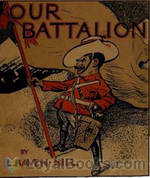 Our Battalion Being Some Slight Impressions of His Majesty's Auxiliary Forces, in Camp and Elsewhere
Our Battalion Being Some Slight Impressions of His Majesty's Auxiliary Forces, in Camp and Elsewhere
| |
By: L. Frank Baum (1856-1919) | |
|---|---|
 Mary Louise and the Liberty Girls
Mary Louise and the Liberty Girls
The Bluebird Books is a series of novels popular with teenage girls in the 1910s and 1920s. The series was begun by L. Frank Baum using his Edith Van Dyne pseudonym, then continued by at least three others, all using the same pseudonym. Baum wrote the first four books in the series, possibly with help from his son, Harry Neal Baum, on the third. The books are concerned with adolescent girl detectives— a concept Baum had experimented with earlier, in The Daring Twins (1911) and Phoebe Daring (1912)... | |
 Aunt Jane's Nieces In The Red Cross
Aunt Jane's Nieces In The Red Cross
The 10th and final book in the series for adolescent girls sees two of the three cousins react to atrocities in World War I by volunteering in the Red Cross. Written under the pseudonym of Edith Van Dyne, this is the 1915 version, which reflects United States' neutrality. A later version, published in 1918, differed significantly to reflect changes in the position of the United States. | |
By: Lady Dorothy (Stanley) Tennant (1855-1926) | |
|---|---|
 Miss Pim's Camouflage
Miss Pim's Camouflage
Mid-WWI, staid Englishwoman Miss Perdita Pim suffers a sunstroke gardening & gains the power of invisibility. She becomes a super-secret agent, going behind German lines, sometimes visible, sometimes not, witnessing atrocities & gleaning valuable war information. | |
By: Lady Sarah Wilson (1865-1929) | |
|---|---|
 South African Memories
South African Memories
Lady Sarah Isabella Augusta Wilson was the aunt of Winston Spencer Churchill. In 1899 she became the first woman war correspondent when she was recruited to cover the Siege of Mafeking for the Daily Mail during the Boer War. She moved to Mafeking with her husband at the start of the war, where he was aide-de-camp to Colonel Robert Baden-Powell. Baden-Powell asked her to leave Mafeking for her own safety after the Boers threatened to storm the British garrison. This she duly did, and set off on a... | |
By: Laura Elizabeth Howe Richards (1850-1943) | |
|---|---|
 Rita
Rita
| |
By: Lawrence Gilman (1878-1939) | |
|---|---|
 Edward MacDowell
Edward MacDowell
| |
By: Lawrence Perry (1875-1954) | |
|---|---|
 Our Navy in the War
Our Navy in the War
| |
By: Leander Stillwell (1843-1934) | |
|---|---|
 The Story of a Common Soldier of Army Life in the Civil War, 1861-1865
The Story of a Common Soldier of Army Life in the Civil War, 1861-1865
Leander Stillwell was an 18-year-old Illinois farm boy, living with his family in a log cabin, when the U.S. Civil War broke out. Stillwell felt a duty “to help save the Nation;” but, as with many other young men, his Patriotism was tinged with bravura: “the idea of staying at home and turning over senseless clods on the farm with the cannon thundering so close at hand . . . was simply intolerable.” Stillwell volunteered for the 61st Illinois Infantry in January 1861. His youthful enthusiasm for the soldier’s life was soon tempered at Shiloh, where he first “saw a gun fired in anger,” and “saw a man die a violent death... | |
By: Leo Tolstoy (1828-1910) | |
|---|---|
 War and Peace
War and Peace
Leo Tolstoy's War and Peace chronicles the lives of five Russian aristocratic families during Napoleon's invasion of Russia. Many considered this book to be the best Russian work of literature of all time and it is massive in scale. The book is divided in four volumes and the chapters don't just contain the narrative of the plot to the novel but philosophical discussions as well. This may be intimidating to average book readers but they shouldn't be discouraged to try reading War and Peace. After all, this book was written for all and not just for intellectuals... | |
 Bethink Yourselves!
Bethink Yourselves!
As Russia goes to war against Japan, Tolstoy urges those at all levels of society, from the Tsar down to the common soldier, to consider their actions in the light of Christ's teaching. "However strange this may appear, the most effective and certain deliverance of men from all the calamities which they inflict upon themselves and from the most dreadful of all—war—is attainable, not by any external general measures, but merely by that simple appeal to the consciousness of each separate man which, nineteen hundred years ago, was proposed by Jesus—that every man bethink himself, and ask himself, who is he, why he lives, and what he should and should not do... | |
 War and Peace Vol. 1 (Dole Translation)
War and Peace Vol. 1 (Dole Translation)
”War and Peace” is a panoramic novel: It is its own justification, and perhaps needs no introduction. It always reminds the translator of a broad and mighty river flowing onward with all the majesty of Fate. On its surface, float swiftly by logs and stumps, cakes of ice, perhaps drowned cattle or men from regions far above. These floating straws, insignificant in themselves, tell the current. Once embark upon it, and it is impossible to escape the onward force that moves you so relentlessly. What landscapes you pass through, what populous towns, what gruesome defiles, what rapids, what cataracts! The water may be turbid, or it may flow translucent and pure, – but still it rushes on... | |
 Sevastopol
Sevastopol
Sevastopol Sketches (Russian: Севастопольские рассказы, Sevastopolskiye rasskazy) are three short stories written by Leo Tolstoy and published in 1855 to record his experiences during the Siege of Sevastopol (1854–1855) in the Crimean War (1853-1856). The name originates from Sevastopol, a city in Crimea. The book has also been released under the anglicized title The Sebastopol Sketches and is sometimes titled Sevastopol Stories. These brief "sketches" formed the basis of many of the episodes in Tolstoy's magnum opus, War and Peace... | |
 War and Peace Vol. 2 (Dole Translation)
War and Peace Vol. 2 (Dole Translation)
I am inclined to rank Count Tolstoy not among the realists or naturalists, but rather as an impressionist. He is often careless about accuracy. Numberless incongruities can be pointed out. He is as willing to adopt an anachronism as a medieval painter. I would defy an historian to reconstruct the battle of Austerlitz from Count Tolstoy's description. And yet what a picture of a battle was ever more vivid! It is like a painting where the general impression is true, but a close analysis discovers... | |
By: Leon Trotsky (1879-1940) | |
|---|---|
 From October to Brest-Litovsk
From October to Brest-Litovsk
This account by Trotsky is of the events in Russia from the October Revolution of 1917 in Petrograd, to his signing of the Brest-Litovsk treaty with Germany on 3rd March 1918 which took Russia out of the First World War. The treaty exacted heavy losses for Russia in terms of annexations of land and financial indemnities to Germany. In this extended essay, Trotsky argues the reasons as to why he decided to sign what appears to be a disastrous agreement for Russia. | |
By: Leonid Nikolayevich Andreyev (1871-1919) | |
|---|---|
 Red Laugh
Red Laugh
The reader is immersed in the Hellish madness of war through the eyes of a tired soldier losing his grip on reality, scarred physically and mentally by the atrocities he witnesses. Lauded author Leonid Andreyev, who many consider Russia's Edgar Allan Poe, gives us a powerful and intense narrative showing the horrors of war and its impact on the psyche. - Summary by Ben Tucker | |
By: Leslie Buswell (1890-1964) | |
|---|---|
 With The American Ambulance Field Service In France; Personal Letters Of A Driver At The Front
With The American Ambulance Field Service In France; Personal Letters Of A Driver At The Front
This 1915 publication collects letters written by a driver for the American ambulance service. The incidents they relate occurred before the entrance of the United States into World War I as a combatant. “These letters, according to ordinary ethics in such matters, should not, perhaps, be published. They were merely intended as tributes of friendship and remembrance. Casually written — in pencil often — at moments between duties, with no thought of their being destined to any further purpose than that distance and absence might count a little less through the pictures they would give of a day's work far away.” - Summary by Book Preface and David Wales | |
By: Lessel Finer Hutcheon (1897-1962) | |
|---|---|
 War Flying by a Pilot
War Flying by a Pilot
Published in 1917, this "little volume of 'Theta’s' letters to his home people" was assembled to provide useful information for young men who might like to become pilots for the Royal Flying Corps. A mixture of conversational letters, poems, and descriptions of flying, the book proves entertaining, even today, despite having been written in training and in active duty during World War I. - Summary by Lynette Caulkins | |
By: Lester del Rey | |
|---|---|
 Victory
Victory
Lester del Rey (1915 – 1993) was a Golden Age science fiction author and editor closely connected to John W. Campbell Jr. and Astounding Science Fiction magazine. He also founded Del Rey Books, a popular publishing label he edited with his wife Judy-Lynn. Victory is the story of an undefended Earth in a warring galaxy. It appeared in the August 1955 issue of Astounding Science Fiction. | |
By: Lewis E. (Lewis Edwin) Theiss (1878-1963) | |
|---|---|
 The Secret Wireless or, The Spy Hunt of the Camp Brady Patrol
The Secret Wireless or, The Spy Hunt of the Camp Brady Patrol
| |
By: Lewis E. Jahns | |
|---|---|
 The History of the American Expedition Fighting the Bolsheviki Campaigning in North Russia 1918-1919
The History of the American Expedition Fighting the Bolsheviki Campaigning in North Russia 1918-1919
| |
By: Lewis R. Freeman (1878-1960) | |
|---|---|
 Stories of the Ships
Stories of the Ships
While most associate the "Great War" with trenches, barbed wire, machine guns, and poison gas, ships played roles in the military at the beginning of the 20th century. Stories of the Ships is a 1919 collection of accounts described in the first person by those who fought battles on the sea during World War I. It gives the listener a more complete account of the conflicts that defined the most costly war in history. Lewis Ransome Freeman was an American explorer, journalist and war correspondent who wrote over twenty books chronicling his many travels, as well as numerous articles... | |
By: Lily Dougall (1858-1923) | |
|---|---|
 Mermaid
Mermaid
"'What a fool I was not to go where she beckoned!' mused Caius. 'Where? Anywhere into the heart of the ocean, out of this dull, sordid life into the land of dreams.' For it must all have been a dream—a sweet, fantastic dream, imposed upon his senses by some influence, outward or inward; but it seemed to him that at the hour when he seemed to see the maid it might have been given him to enter the world of dreams, and go on in some existence which was a truer reality than the one in which he now was... | |
By: Lionel James (1871-1955) | |
|---|---|
 On the Heels of De Wet
On the Heels of De Wet
| |
By: Logan Marshall | |
|---|---|
 A History of the Nations and Empires Involved and a Study of the Events Culminating in the Great Conflict
A History of the Nations and Empires Involved and a Study of the Events Culminating in the Great Conflict
| |
By: Lord Dunsany (1878-1957) | |
|---|---|
 Tales of War
Tales of War
Lord Dunsany brings his lucid and magical prose to the subject of the harsh realities of war by providing a series of vignettes that are at times grim and grounded but also at times eerie and fantastical. Summary by Ben Tucker. | |
By: Lord Thomas Cochrane (1775-1860) | |
|---|---|
 Autobiography of a Seaman, Vol. 1
Autobiography of a Seaman, Vol. 1
This two volume work is the autobiography of Lord Cochrane, a naval captain of the Napoleonic period. His adventures are seminal to the development of naval fiction as a genre. Marryat sailed with Cochrane, while later writers borrowed incidents from this biography for their fictions. Most notable among these is Patrick O'Brian, three of whose novels have clear parallels to incidents in the life of Cochrane. This first volume covers Cochrane's earlier life, during which he is most active militarily. (Introduction by Timothy Ferguson) | |
 Autobiography of a Seaman, Vol. 2
Autobiography of a Seaman, Vol. 2
This second volume of the biography of Lord Cochrane deals with his fall from grace, imprisonment for debt, loss of honours, and attempts to clear his name. It has had a marked influence on naval fiction, most obviously on some of the novels by Patrick O'Brian. - Summary by Timothy Ferguson | |
By: Louis Joseph Vance (1879-1933) | |
|---|---|
 The False Faces
The False Faces
This is the second book in the Lone Wolf series. Michael Lanyard had turned his back on his career as gentleman-thief and started a respectable life, when World War I wrecks his life. With his family dead and the spy Ekstrom alive after all, his special skills as the Lone Wolf are needed once more, this time in the war behind enemy lines. But again, there is a mysterious woman involved... | |
By: Louis Keene | |
|---|---|
 "Crumps", The Plain Story of a Canadian Who Went
"Crumps", The Plain Story of a Canadian Who Went
| |
By: Louis Paul Bénézet (1878-1961) | |
|---|---|
 The World War and What was Behind It Or, the Story of the Map of Europe
The World War and What was Behind It Or, the Story of the Map of Europe
| |
By: Louis Raemaekers (1869-1956) | |
|---|---|
 Raemaekers' Cartoons With Accompanying Notes by Well-known English Writers
Raemaekers' Cartoons With Accompanying Notes by Well-known English Writers
| |
By: Louise Mack (1870-1935) | |
|---|---|
 Woman's Experiences in the Great War
Woman's Experiences in the Great War
An eye-witness account of the fall of Antwerp to the Germans in the opening months of World War I, Mack’s story has passages of extraordinary vividness and immediacy. Flawed by the most treacly sentiment in some places and the most ferocious anti-German invective in others, her account endures as an uncommonly forthright, passionate testimony to those tragic events and the ordinary people who were the true heroes of them. As a forty-something, coquettish war correspondent wrapped in sable furs... | |
By: Lucy Fitch Perkins | |
|---|---|
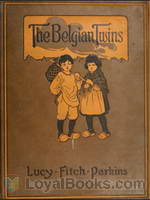 The Belgian Twins
The Belgian Twins
This story is based upon the experiences of two Belgian refugees in World War I. When their parents are marched of by Germans, Jan and Marie are left alone. Now they, along with their dog, have to find their parents! | |
 The French Twins
The French Twins
| |
By: Lucy Maud Montgomery (1874-1942) | |
|---|---|
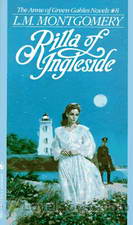 Rilla of Ingleside
Rilla of Ingleside
Rilla of Ingleside is the eighth book in the Anne of Green Gables series and focuses on the inspiring journey of Rilla Blythe, the youngest daughter of Anne and Gilbert, as she transforms from a carefree young girl into an enduring young woman swept into the chaos of war. Written from a female perspective, Montgomery accurately depicts a time in history, as she provides a contemporaneous account of the war and serves up the most emotional book in the series. Set during the First World War, the novel explores themes of coming of age, love, separation, and most importantly women’s roles during the war... | |
 The Story Girl
The Story Girl
Revealed to be a personal favorite by Montgomery herself, The Story Girl follows the lives of a group of young children as they experience a summer of charming and realistically clumsy adventures. Published in 1911, the novel explores themes of childhood innocence and its transience, while highlighting the value of intangible things which prove to be the very essence of life. The novel begins when the young narrator Beverly King and his brother Felix are sent to stay with their Aunt Janet and Uncle Alec at their country estate over the summer, while their widowed father is away on business abroad... | |
 The Golden Road
The Golden Road
In the sequal to The Story Girl Sara Stanley returns to join the King children in publishing their own local magazine to entertain the town of Carlisle. | |
 Rainbow Valley
Rainbow Valley
If you've read and loved Anne of Green Gables, you'd definitely like to add Rainbow Valley by Lucy Maud Montgomery to your collection. Published in 1919, it is the seventh book in the series and follows the further life and adventures of Anne Shirley. At Ingleside, Anne is now happily married to her childhood friend the devoted Gilbert Blythe and have now been together blissfully for fifteen years. They have six children. The book opens with the return of Anne and Gilbert (who is now a brilliant doctor) from a sojourn in London, where they had gone to attend a big medical congress... | |
By: Luise Mühlbach (1814-1873) | |
|---|---|
 Frederick the Great and His Family
Frederick the Great and His Family
| |
 Louisa of Prussia and Her Times
Louisa of Prussia and Her Times
| |
By: M. E. Bewsher | |
|---|---|
 Catharine's Peril, or The Little Russian Girl Lost in a Forest And Other Stories
Catharine's Peril, or The Little Russian Girl Lost in a Forest And Other Stories
| |
By: Mabel Annie Stobart (1862-1954) | |
|---|---|
 War and Women
War and Women
"The sending of a Women’s Convoy Corps to the Balkans was the result of Mrs. Stobart’s keen desire to demonstrate the ability of women to render signal service under war conditions and without the direction and assistance of men. This record of their achievements, therefore, provides a strong vindication of the claims of women to inclusion in the Territorial Defence Scheme". | |
By: Mack Reynolds (1917-1983) | |
|---|---|
 Border, Breed Nor Birth
Border, Breed Nor Birth
| |
By: Mainwaring George Jacson | |
|---|---|
 The Record of a Regiment of the Line Being a Regimental History of the 1st Battalion Devonshire Regiment during the Boer War 1899-1902
The Record of a Regiment of the Line Being a Regimental History of the 1st Battalion Devonshire Regiment during the Boer War 1899-1902
| |
By: Marcel Dupont (1879-1964) | |
|---|---|
 In the Field (1914-1915)
In the Field (1914-1915)
I have merely tried to make a written record of some of the hours I have lived through during the course of this war. A modest Lieutenant of Chasseurs, I cannot claim to form any opinion as to the operations which have been carried out for the last nine months on an immense front. I only speak of things I have seen with my own eyes, in the little corner of the battlefield occupied by my regiment. | |
By: Maria Thompson Daviess (1872-1924) | |
|---|---|
 The Golden Bird
The Golden Bird
| |
By: Marie Belloc Lowndes (1868-1947) | |
|---|---|
 Good Old Anna
Good Old Anna
| |
By: Marion Polk Angellotti (1894-1979) | |
|---|---|
 The Firefly of France
The Firefly of France
| |
By: Mark Twain (1835-1910) | |
|---|---|
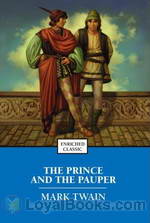 The Prince and the Pauper
The Prince and the Pauper
A poor young boy from the slums of London watches a royal procession pass, with the youthful Prince of Wales riding at its head. He ventures too close and is caught and beaten by the Prince's guards. However, the young royal stops them and invites the vagrant to the palace. Here the two boys sup alone and are stunned to discover that they bear a startling resemblance to each other. The Prince is Edward, long awaited heir of the monarch, Henry VIII, while the vagrant is Tom Canty, the son of a thief and a beggar... | |
 Personal Recollections of Joan of Arc, Volumes 1 & 2
Personal Recollections of Joan of Arc, Volumes 1 & 2
Mark Twain’s work on Joan of Arc is titled in full “Personal Recollections of Joan of Arc, by the Sieur Louis de Conte.” De Conte is identified as Joan’s page and secretary. For those who’ve always wanted to “get behind” the Joan of Arc story and to better understand just what happened, Twain’s narrative makes the story personal and very accessible. The work is fictionally presented as a translation from the manuscript by Jean Francois Alden, or, in the words of the published book, “Freely Translated out of the Ancient French into Modern English from the Original Unpublished Manuscript in the National Archives of France... | |
 Anti-imperialist writings
Anti-imperialist writings
This audiobook is a collection of Mark Twain's anti-imperialist writings (newspaper articles, interviews, speeches, letters, essays and pamphlets). | |
By: Martha Trent | |
|---|---|
 Lucia Rudini Somewhere in Italy
Lucia Rudini Somewhere in Italy
| |
By: Martin Alonzo Haynes (1842-1919) | |
|---|---|
 Minor War History
Minor War History
A personal history of the American Civil War taken from the author's own letters to 'the girl he left behind', who later became his wife. This is not a complete history and does not deal with major events, but is a snapshot of life in the Second New Hampshire Regiment and humanizes the history we study. Haynes went on to have an illustrious career. After the war, he founded a local newspaper, of which he was editor. He was also elected to the New Hampshire House of Representatives, and became clerk to the county Supreme Court... | |
By: Mary A. Roe | |
|---|---|
 E.P. Roe: Reminiscences of his Life
E.P. Roe: Reminiscences of his Life
| |
By: Mary Chesnut | |
|---|---|
 A Diary from Dixie
A Diary from Dixie
Mary Boykin Miller Chesnut, a well-educated South Carolina woman who was the wife of a Confederate general, kept extensive journals during the Civil War. Mrs. Chesnut moved in elite circles of Southern society and had a keen interest in politics. Her diary is both an important historic document and, due to her sharp wit and often irreverent attitude, a fascinating window into Southern society of the time. This recording is of the first published edition of the diary, compiled from Mrs. Chesnut's revisions of her original journals. | |
By: Mary Grant Bruce (1878-1958) | |
|---|---|
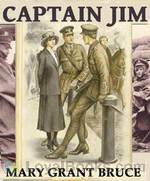 Captain Jim
Captain Jim
This book is about Norah Linton, her brother Jim, her father David and Jim's chum Wally from Australia. They all move to England during WWI because Jim and Wally want to fight in the war.When a Irish friend of the family dies, Norah inherits a big house in Surrey: Homewood. To keep up the Irishman's memory they want to use the house to help the war effort. They turn it into a home for "Tired People"--soldiers recovering from injuries, or soldiers on leave that have no family to go home to, can come here to have a good time and enjoy the country-side, so that they can go back to their regiments fully rested and restored... | |
By: Mary Hazel Snuff | |
|---|---|
 Study Of Army Camp Life During American Revolution
Study Of Army Camp Life During American Revolution
Housing, Food, Clothing, Health, Sanitation, Recreation, Religion, Duties, Discipline. A thesis submitted in partial fulfillment of the requirements for the degree of master of arts in history in the Graduate School of the University of Illinois 1918. - Summary by David Wales | |
By: Mary Johnston (1870-1936) | |
|---|---|
 The Long Roll
The Long Roll
| |
By: Mary Rhodes Waring Henagan | |
|---|---|
 Two Diaries From Middle St. John's, Berkeley, South Carolina, February - May, 1865
Two Diaries From Middle St. John's, Berkeley, South Carolina, February - May, 1865
Two diaries from Middle St. John’s, Berkeley, South Carolina, February – May, 1865. Journals kept by Miss Susan R. Jervey and Miss Charlotte St. Julien Ravenel, at Northampton and Poooshee Plantations, and reminiscences of Mrs. Henagan. With two contemporary reports from Federal officials. Published by the St. John’s Hunting Club, Middle St. Johns, Berkeley, South Carolina, 1921. - Summary by Book title and david wales | |
By: Mary Roberts Rinehart (1876-1958) | |
|---|---|
 The Amazing Interlude
The Amazing Interlude
It is the early days of The Great War. As the curtain rises, Sara Lee is sitting by the fire in her aunt and uncle’s home, knitting a baby afghan. Her beau’s name is Harvey. He has his eye on a little house that is just perfect for two and he will soon propose to Sara Lee. But in this play, the mise en scène is about to change. A fairyland transformation will take place and Sara Lee will step into a new and different story, where she is the princess in a forest of adventure. There is a prince, too, whose name is Henri... | |
 Kings, Queens and Pawns: An American Woman at the Front
Kings, Queens and Pawns: An American Woman at the Front
A personal account of the American author's visit to Europe in January 1915 while a war correspondent in Belgium for The Saturday Evening Post. She writes: "War is not two great armies meeting in a clash and frenzy of battle. It is much more than that. War is a boy carried on a stretcher, looking up at God's blue sky with bewildered eyes that are soon to close; war is a woman carrying a child that has been wounded by a shell; war is spirited horses tied in burning buildings and waiting for death; war is the flower of a race, torn, battered, hungry, bleeding, up to its knees in icy water; war is an old woman burning a candle before the Mater Dolorosa for the son she has given... | |
By: Mary Rowlandson (c.1637-1711) | |
|---|---|
 A Narrative of the Captivity and Restoration of Mrs. Mary Rowlandson
A Narrative of the Captivity and Restoration of Mrs. Mary Rowlandson
This is the story of Mary Rowlandson’s capture by American Indians in 1675. It is a blunt, frightening, and detailed work with several moments of off-color humor. Mary, the wife of a minister, was captured by Natives during King Philips War while living in a Lancaster town, most of which was decimated, and the people murdered. See through her eyes, which depict Indians as the instruments of Satan. Her accounts were a best-seller of the era, and a seminal work, being one of the first captivity narratives ever published by a woman... | |
By: Mary Seacole (1805-1881) | |
|---|---|
 Wonderful Adventures of Mrs. Seacole in Many Lands
Wonderful Adventures of Mrs. Seacole in Many Lands
I should have thought that no preface would have been required to introduce Mrs. Seacole to the British public, or to recommend a book which must, from the circumstances in which the subject of it was placed, be unique in literature. If singleness of heart, true charity, and Christian works; if trials and sufferings, dangers and perils, encountered boldly by a helpless woman on her errand of mercy in the camp and in the battle-field, can excite sympathy or move curiosity, Mary Seacole will have many friends and many readers... | |
By: Maurice Maeterlinck (1862-1949) | |
|---|---|
 The Wrack of the Storm
The Wrack of the Storm
| |
By: Maurice Nicoll (1884-1953) | |
|---|---|
 In Mesopotamia
In Mesopotamia
| |
By: May Sinclair (1863-1946) | |
|---|---|
 Journal of Impressions in Belgium
Journal of Impressions in Belgium
In 1914, at the age of 51, the novelist and poet May Sinclair volunteered to leave the comforts of England to go to the Western Front, joining the Munro Ambulance Corps ministering to wounded Belgian soldiers in Flanders. Her experiences in the Great War, brief and traumatizing as they were, permeated the prose and poetry she wrote after this time. Witness of great human pain and tragedy, Sinclair was in serious danger of her life on multiple occasions. This journal makes no attempt to be anything more than a journal: a lucid, simple, heart-breaking account of war at first hand. | |
By: Mayne Reid (1818-1883) | |
|---|---|
 The Lone Ranche
The Lone Ranche
| |
By: Michael Clarke (1844?-1916) | |
|---|---|
 The Story of Troy
The Story of Troy
| |
By: Mildred Aldrich (1853-1928) | |
|---|---|
 A Hilltop on the Marne Being Letters Written June 3-September 8, 1914
A Hilltop on the Marne Being Letters Written June 3-September 8, 1914
| |
 On the Edge of the War Zone From the Battle of the Marne to the Entrance of the Stars and Stripes
On the Edge of the War Zone From the Battle of the Marne to the Entrance of the Stars and Stripes
| |
By: Militia of Mercy (U.S.). Gift Book Committee | |
|---|---|
 Defenders of Democracy; contributions from representative men and women of letters and other arts from our allies and our own country, edited by the Gift book committee of the Militia of Mercy
Defenders of Democracy; contributions from representative men and women of letters and other arts from our allies and our own country, edited by the Gift book committee of the Militia of Mercy
| |
By: Milo Hastings (1884-1957) | |
|---|---|
 In the Clutch of the War-God
In the Clutch of the War-God
In three parts, from Physical Culture magazine, July - September, 1911. In this story, the author warns of the coming of a world war between Japan and U.S. While the Japanese have a superior society, they suffer from food shortages and over-population so go to war with the U.S., who is plagued by a society of ill health and habit. Some predictions are remarkably accurate. The story itself was commissioned by Bernarr Macfadden, who was an early proponent of health and fitness in the U.S. and founded the magazine publisher McFadden Publications. - Summary by Kate Follis | |
By: Montague Glass (1877-1934) | |
|---|---|
 Worrying Won't Win
Worrying Won't Win
| |
 Potash and Perlmutter Settle Things
Potash and Perlmutter Settle Things
| |
By: Mordaunt Hall | |
|---|---|
 Some Naval Yarns
Some Naval Yarns
| |
By: Morgan Robertson | |
|---|---|
 Futility, Or the Wreck of the Titan
Futility, Or the Wreck of the Titan
This novel was published a full 14 years before the sinking of the Titanic, but listeners may be surprised at how many parallels this fictional tale has with subsequent true events. The Titan is the largest and most technologically advanced steamship of her time. She is considered unsinkable. Her full speed crossings of the Northern Lane Route carry her rich passengers in the highest standards of luxury and comfort. The less well-off travel in rougher quarters but still benefit from the speed of travel... | |
By: Morris J. MacGregor (1931-) | |
|---|---|
 Integration of the Armed Forces, 1940-1965
Integration of the Armed Forces, 1940-1965
| |
By: Murray Leinster (1896-1975) | |
|---|---|
 Morale A Story of the War of 1941-43
Morale A Story of the War of 1941-43
| |
By: N. P. Dawson | |
|---|---|
 Good Soldier; A Selection Of Soldiers' Letters, 1914-1918
Good Soldier; A Selection Of Soldiers' Letters, 1914-1918
“Here are boys, all sorts of boys: French, English, Italian, American… These are soldiers’ letters written home. But reading, one finds that he does not think of them as letters at all, but as boys… but the spirit of these letters cannot be defeated. The dead will rise again.” Each letter is introduced by a paragraph or two about the writer. - Summary by Author's Introduction and David Wales | |
By: N. S. (Neville Stuart) Talbot (1879-1943) | |
|---|---|
 Thoughts on religion at the front
Thoughts on religion at the front
| |
By: National Security Council (U.S.) | |
|---|---|
 National Strategy for Combating Terrorism September 2006
National Strategy for Combating Terrorism September 2006
| |
By: Nellie L. McClung (1873-1951) | |
|---|---|
 The Next of Kin Those who Wait and Wonder
The Next of Kin Those who Wait and Wonder
| |
By: Nellie McClung (1873-1951) | |
|---|---|
 Three Times and Out
Three Times and Out
The true story of M. C. Simmons, a Canadian soldier captured by the German Army during the early days of World War I. We read of his sixteen months of imprisonment, his encounters with other captured troops of the other Allied armies and his observations of the nature of his captors and their countrymen. Most compellingly we read of his escape from POW camp, his recapture and punishment, and then the capture and punishment following his second escape attempt, climaxing in his third escape attempt and daring travel through enemy territory against all odds... | |
By: Newell Dwight Hillis (1858-1929) | |
|---|---|
 The Blot on the Kaiser's 'Scutcheon
The Blot on the Kaiser's 'Scutcheon
| |
By: Niccolò Machiavelli (1469-1527) | |
|---|---|
 Machiavelli, Volume I
Machiavelli, Volume I
| |
 Art of War (Neville Translation)
Art of War (Neville Translation)
The Art of War is the only book published by Niccolo Machiavelli during his lifetime, and he saw it as one of his finest achievements. The Art of War develops many themes introduced in Machiavelli’s earlier works “The Prince” and “Discourses” and presents them as the collected wisdom of a fictional leader Lord Fabrizio Colonna. The book is constructed as a series of dialogues supposedly held during a summer afternoon spent in the Orti Oricellari gardens in Florence.The stated aim is “To... | |
By: Nicholas Canzona (1925-1985) | |
|---|---|
 U. S. Marine Operations in Korea 1950-1953, Volume 1: The Pusan Perimeter
U. S. Marine Operations in Korea 1950-1953, Volume 1: The Pusan Perimeter
It meant little to most Americans on 25 June 1950 to read in their Sunday newspapers that civil strife had broken out in Korea. They could hardly have suspected that this remote Asiatic peninsula was to become the scene of the fourth most costly military effort of American history, both in blood and money, before the end of the year. With a reputation built largely on amphibious warfare, Marines of the 1st Brigade were called upon to prove their versatility in sustained ground action. On three separate occasions within the embattled Perimeter—south toward Sachon and twice along the Naktong River—these Marine units hurled the weight of their assault force at the enemy... | |
 U.S. Marine Operations in Korea, 1950-1953, Volume 2: The Inchon-Seoul Operation
U.S. Marine Operations in Korea, 1950-1953, Volume 2: The Inchon-Seoul Operation
The Inchon Landing was a major amphibious operation, planned in record time and executed with skill and precision. Even more, it was an exemplification of the fruits of a bold strategy executed by a competent force. The decision to attack at Inchon involved weakening the line against enemy strength in the Pusan Perimeter in order to strike him in the rear. It involved the conduct of an amphibious attack under most difficult conditions of weather and geography. It ultimately culminated with combat in the heart of Seoul. - Summary by Lemuel C. Shepherd, Jr. and Aaron Bennett | |
By: Oliver Optic (1822-1897) | |
|---|---|
 Within The Enemy's Lines
Within The Enemy's Lines
| |
 On The Blockade
On The Blockade
| |
 Stand By The Union
Stand By The Union
| |